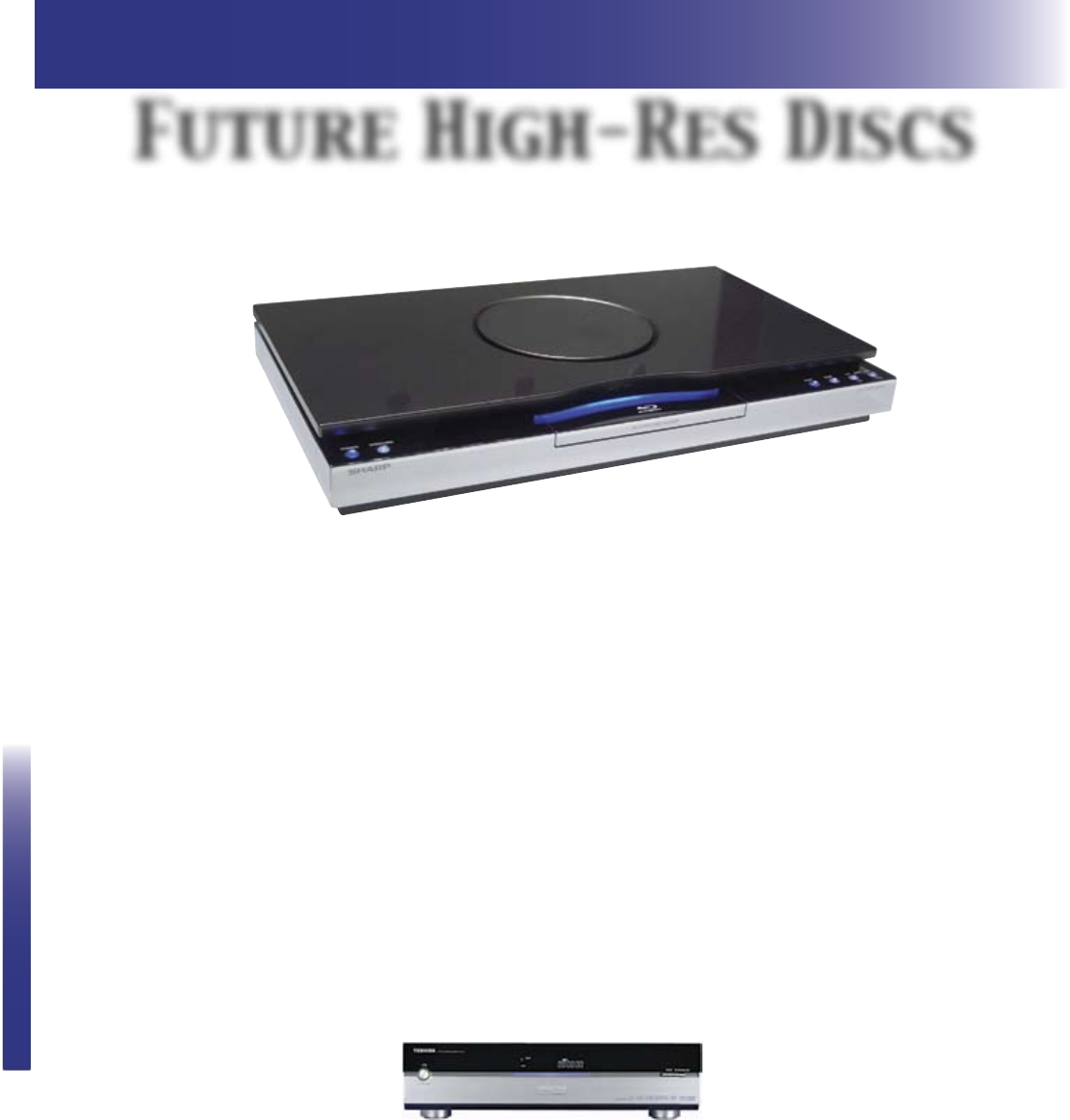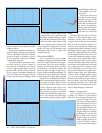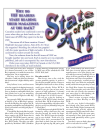
Feedback
Cinema
A
s we write this (and probably
as you read this), the format
battle for the next silver audio/
video disc is still on. Yes, it will
affect audio as well as video.
Let’s recapitulate.
On one side are
Toshiba, NEC, and —
perhaps more impor-
tant — the DVD Forum,
the consortium that set
the standard for the existing
DVD. Their project is HD
DVD, the “HD” of course
standing for “high definition.”
It is read with a blue laser, which
has a shorter wavelength than the red
laser used in existing DVD and CD
players. In other respects the disc itself is
similar to the existing DVD, and can be
produced in existing plants (though pre-
sumably with a lower yield of flaw-free
discs). The advantages of this DVD-like
format are obvious. The discs will be
cheaper to produce and the saving can
be passed on to consumers (hey, we’re
just reporting the official line). And the
system can be brought to market faster.
Target launch: Fall of 2005.
Wait a minute…2005?
In fact Toshiba’s first HD DVD
player, the HD-XA1 (shown at lower
right), was launched on March 31, 2006,
and only in Japan. Its eventual US
price was listed as $799 (the HD-A1,
announced earlier, which was supposed
to be cheaper, was not mentioned). The
price is mostly theoretical, since at
launch time there was not a single film
available in the format. So much for
coming to market faster. It did, however,
beat its competitor to market.
The competitor is Blu-Ray, backed
by Sony and Matsushita (Panasonic),
but not the DVD Forum. The Blu-Ray
disc also uses a blue laser, as its name
implies, but its structure is different.
The polycarbonate layer covering data
side of the disc is ten times thinner than
that of the DVD, allowing a better view
and therefore more data density. Making
Blu-Ray discs will require retooling
factories, but that is of course only a
transitional drawback.
As in a shooting
war, the two camps have scrambled
to gather allies. Toshiba has powerful
partners, such as Microsoft and Intel,
and more importantly Hollywood
studios: Warner, Universal and Disney.
The Blu-Ray camp has the support of
Hewlett-Packard, Dell and Apple, as
well as Sony Pictures (of course), MGM
(which belongs to Sony) and 20th Cen-
tury Fox.
The first Blu-Ray player was due
for launch about now too, and one was
shown by Samsung at the Montreal show
in late March, but it has been…(surprise!)
delayed (to May 23rd, but keep your eyes
open for more news). If and when they
are released, Blu-Ray players will be
about double the price of the Toshiba
player. Take those prices with a grain of
salt, however, because with no available
software neither player will be available
for sale in any store.
Movie studio support
On the face of it, having the studios
on side is vital, because only they can
supply software. But if it’s possible for
the studios to help, it’s just as possible
that they can choose to stop the devel-
opment of tomorrow’s discs dead in its
tracks.
The industry got badly burned with
the DVD, whose CSS encryption was
supposed to make copying impossible.
Breaking CSS turned out to be trivial,
and there are plenty of shareware
and even freeware programs
for defeating it. Hol-
lywood doesn’t want
that to happen
with a much better
resolution disc. Are
the anti-copying
systems of HD DVD and
Blu-Ray done? And will they really be
more robust? We believe they are not
finalized, and if that is true no usable
player can truly be launched.
We might add that it seems unlikely a
more robust anti-copy system can resist
reverse engineering. That’s because
anyone who makes a player needs to have
the keys. Someone is going to forget the
key on a store counter somewhere. Lest
we forget, that was how CSS first got
breached.
Come to think of it, are the studios
ready to abandon DVD’s zone system,
which prevents discs from one part of
the world from being played in another?
Of course that system was compromised
years ago, but is Hollywood ready to go
with worldwide release of a single disc?
Or is this one more thing that needs to
be straightened out before the first player
is sold to the public?
Though the studios have chosen
sides, no one is interested in making
films for a player no one buys…nor
in having productions absent from a
system that becomes popular. Beyond
the posturing, the studios are hedging
their bets. They will release films for
whichever is the winning system. And
the winner will be decided by large store
chains, not by consumers.
What about audiophiles?
Whichever system wins out, the
vast space on the disc might make it
possible to make more space for sound.
Future High-Res Discs
Cinema
50 ULTRA HIGH FIDELITY Magazine


















